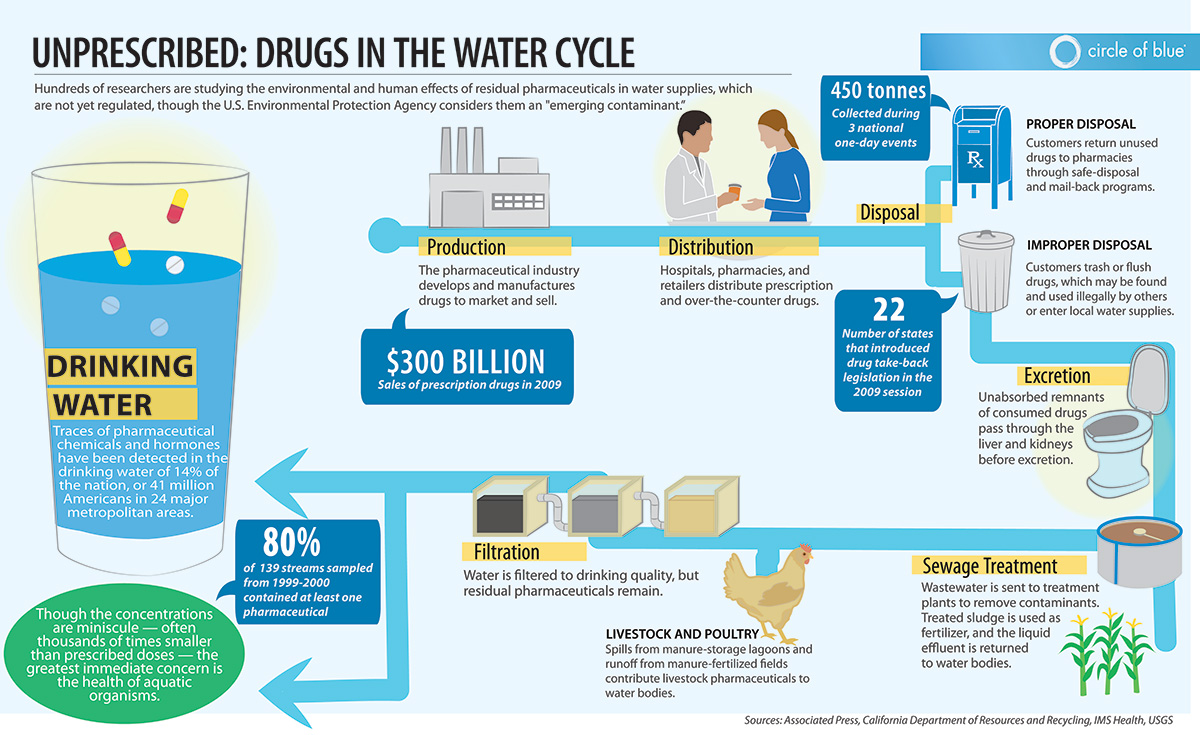
The quality of the source water used to produce pharmaceutical water plays an important role for both the design of the treatment and the validation of the water system. FDA Warning Letters over the past few years have shown that compliance with the specification of pharmaceutical water is not enough. A validation of the treatment process is expected. This includes documentation of the process capacity to produce pharmaceutical water according to specification. If we do not know the quality of the source water, however, the purification capacity is not known either. As a consequence, fluctuations of the quality of the source (feed) water quality may lead to water that does not comply with the specification after purification. Or it is not known up to which quality level of the source water pharmaceutical water that complies with the specification can be produced. Therefore, it is important to know the impurities respectively their concentration in the source (feed) water.
The production of pharmaceutical water is always based on drinking water. The specifications for drinking water however (for Germany, stipulated in the Trinkwasserverordnung; for the U.S., in the National Primary Drinking Water Regulation) are defined very broadly compared to Pharmacopoeial specifications.
The quality of the drinking water varies widely as well, as drinking water may come from different sources (ground water or surface water). Even the ground water quality varies locally, e. g., depending on the season. This is why water purification plants for the pharmaceutical industry are not ready-made goods, but individual solutions that have to be developed by the future user and the plant supplier together. The plant supplier will always ask about the quality of the drinking water so that he can offer the appropriate processing technologies.
In particular, he will need the following information. For this purpose, it is useful to provide the plant engineer with various drinking water analyses over a minimum period of twelve months.
For the design of a pharmaceutical water plant, the indicator parameters according to the Trinkwasserverordnung (conductivity, iron, manganese, sulphate and pH value) are important, as the amount of the ionic load determines the treatment process. For instance, a single-stage or double-stage reverse osmosis may be sufficient to obtain adequate quality at low conductivity levels. Iron and manganese are limited by the drinking water ordinance, but will lead to irreversible membrane damage at the reverse osmosis plant when their limits (according to the Trinkwasserverordnung) are exceeded.
Furthermore, information on the total hardness is indispensable, as it has a major influence on the design of the softening plant – as well as on carbonate hardness or base capacity which are used to calculate the amount of dissolved carbon dioxide. This parameter restricts the use of EDI or may require further treatment, such as membrane degassing.
Depending on the origin of the drinking water, a responsible plant engineer should measure the colloid index (SDI 15) before designing the plant. Especially with surface water, higher amounts are to be expected. A colloid index of more than 5%/min can already have a negative impact on the operation of a reverse osmosis plant (membrane blocking and/or fouling) and may require additional treatment techniques, such as ultrafiltration before the main plant. While the colloid index is never determined via the water supplier, the silicate content is often indicated in the drinking water analysis. A silicate content of more than 25 ppm can become critical for a combination of reverse osmosis and EDI and should also be determined in case it is not indicated in the analysis.
All microbiological parameters have been regulated in the Trinkwasserverordnung. However, you should always remember that the supplier guarantees the quality only up to the point of transfer. With regards to the total bacteria count in particular, regular tests are necessary in order to identify seasonal fluctuations.
http://www.gmp-compliance.org/enews_5532_Critical-Impurities-in-Pharmaceutical-Water_n.html

////////////Critical Impurities, Pharmaceutical Water












